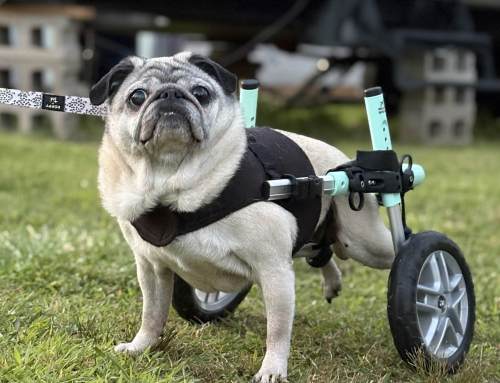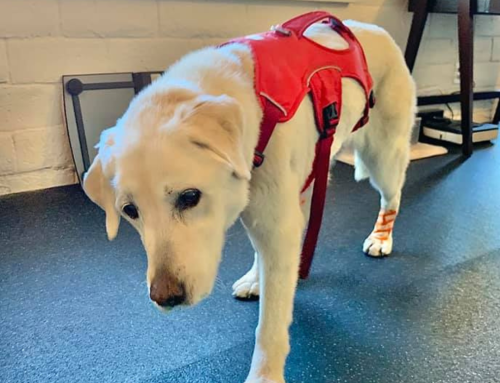As your dog ages, you might start to think they are acting a bit senile or forgetful. In fact, dogs DO experience cognitive changes as they age much like humans do. Canine Cognitive Dysfunction (CCD) is a condition that affects many senior dogs.
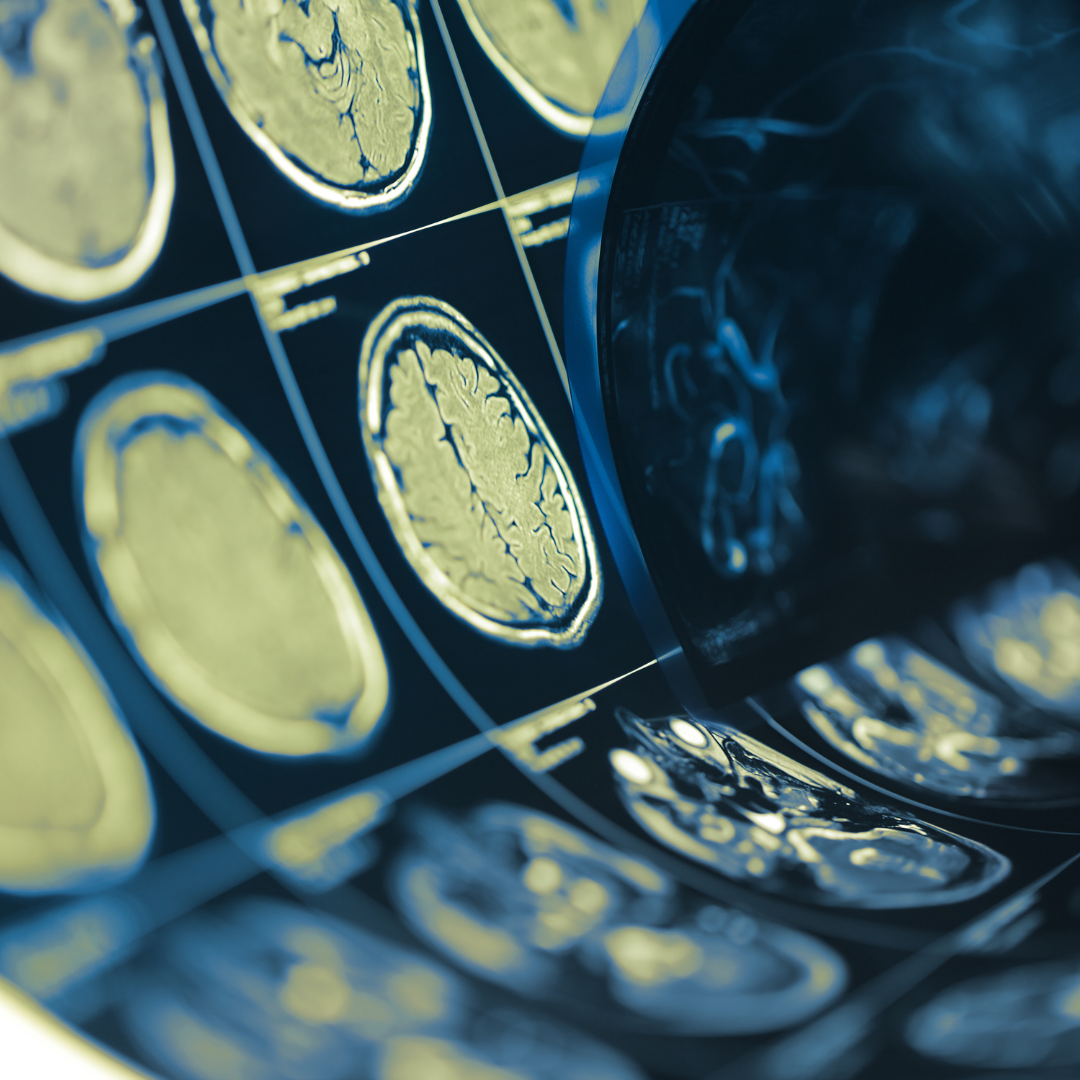
CCD is also often referred to as canine cognitive dysfunction syndrome (CDS) or doggy dementia. It is a neurodegenerative condition that is similar to human Alzheimer’s disease. CCD affects up to 60% of dogs in their lifetime, most of which are over the age of 11. There does not seem to be a breed that is more or less affected but smaller dogs tend to develop CCD more often than large dogs. This is likely due to their longer life span which means more time for the degenerative (i.e. breakdown) process to happen.
How is CCD diagnosed?
In dogs, cognitive dysfunction is diagnosed by ruling out other possible causes of behaviour changes such as brain tumors and hormone imbalances. This involves consultation with your veterinarian. As always with older dogs, it can be easy to “brush off” changes to your dog just getting older but it is vital to mention these changes to your vet in order to ensure your dog is receiving the best care.
The acronym often used to review signs of CCD is DISHAA:
- Disorientation – staring off, circling, getting lost in familiar places, waiting at the wrong side of a door (i.e.. the hinged side), falling off of things
- altered social Interactions – aggression, increase or decrease in attention seeking, withdrawn
- altered Sleep–wake cycles – day/night confusion, increased nighttime activity, sundowning behaviours
- House soiling and loss of other learned behaviours – not recognizing name, forgetting training skills
- altered Activity levels – more sedentary, repetitive behaviours, barking at inappropriate times
- increasing Anxiety – fear, anxiety, depression
What causes CCD?
The exact cause of CCD is not fully understood and likely there is not just one but several things that lead to this disease. It is believed that plaques develop that impair brain function. There is also a loss of neurons, the structures that carry information in the brain. Several possible reasons for why these changes occur include:
- Brain aging
- Genetics
- General health of a dog
- Inflammation
- Other health issues
- Quality of diet (certain foods might be protective while others may cause inflammation)
- Environmental factors
- socialization
- finances of owner
- air and water quality

How is CCD similar to human Alzheimer’s disease?
This is a large area of study. Because of the similarities between canine cognitive dysfunction and Alzheimer’s disease, dogs are an ideal model for studying the human condition. While not fully understood, the development of plaques in the brain appears to be in someway responsible for the changes seen with these two conditions. Where in the brain these plaques occur also seems to be responsible for different symptoms such as changes in memory, learning, motor control or impulse control. Brain atrophy (i.e. shrinking of the brain) is seen in both diseases as well.
Can Canine Cognitive Dysfunction be cured?
There is no cure for CCD. There are medications that your veterinarian may recommend that can help slow the progression of CCD or manage the symptoms. Instead of thinking about “curing” CCD, we may be best to think about how to manage it. Areas which we can think about managing CCD include diet, environment, sleep and behaviour.
Dietary changes:
There are commercial dog foods available that are developed specifically for cognitive health. Discuss the appropriateness of these foods with your vet.
Antioxidants may also help reduce inflammation and damage in the brain. Some antioxidants that may be beneficial for dogs with CCD include vitamin E (found in nuts and seeds), vitamin C (found in green leafy vegetables, broccoli, green peppers, citrus fruit and strawberries), carnitine (found in beef, chicken and supplements) and ALA (found in spinach, beef hearts, broccoli and supplements). It is always best to discuss any changes to your dogs diet or supplements with a knowledgeable professional to ensure you aren’t doing more harm than good.
Environment changes:
Providing easy access to the things your dog needs often can be very beneficial. Place food and water bowls in a spot that is familiar to your dog and in a place where they can’t easily get stuck. Same goes for their bed. Limit areas that they can get into but can’t get out of (e.g. a space between a wall and furniture). Think about getting down on your dog’s level and scanning your home to see what improvements you can make.
Sleep changes:
If you find your dog is starting to confuse day and night, help nudge their body into recognizing the need for activity during the day by exposing them to exercise and light during the day time. Your vet may also recommend medication to help them settle and sleep at night. Things like white nose and dark rooms can also help your dog sleep well at night. If you’ve ever had a baby, consider those tools that helped you put your baby to sleep and if you can adapt them to use with your dog!
Behaviour changes:
We all know our dogs LOVE routines, especially as they age. This becomes especially important if your dog is experiencing cognitive decline. If they are becoming fearful or anxious, try to limit the situations they are in that might trigger unwanted behaviours (i.e. being in loud, busy environments that might make them anxious or aggressive).
If they are going to the bathroom in the house, try to watch for “signs” that they need to be let outside.
Equipment needs:
Sometimes a few tools make life easier. Things like waterproof bedding, diapers or belly bands or a dog stroller can make all the difference.
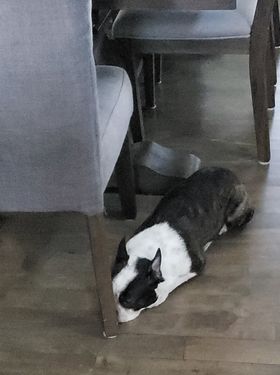

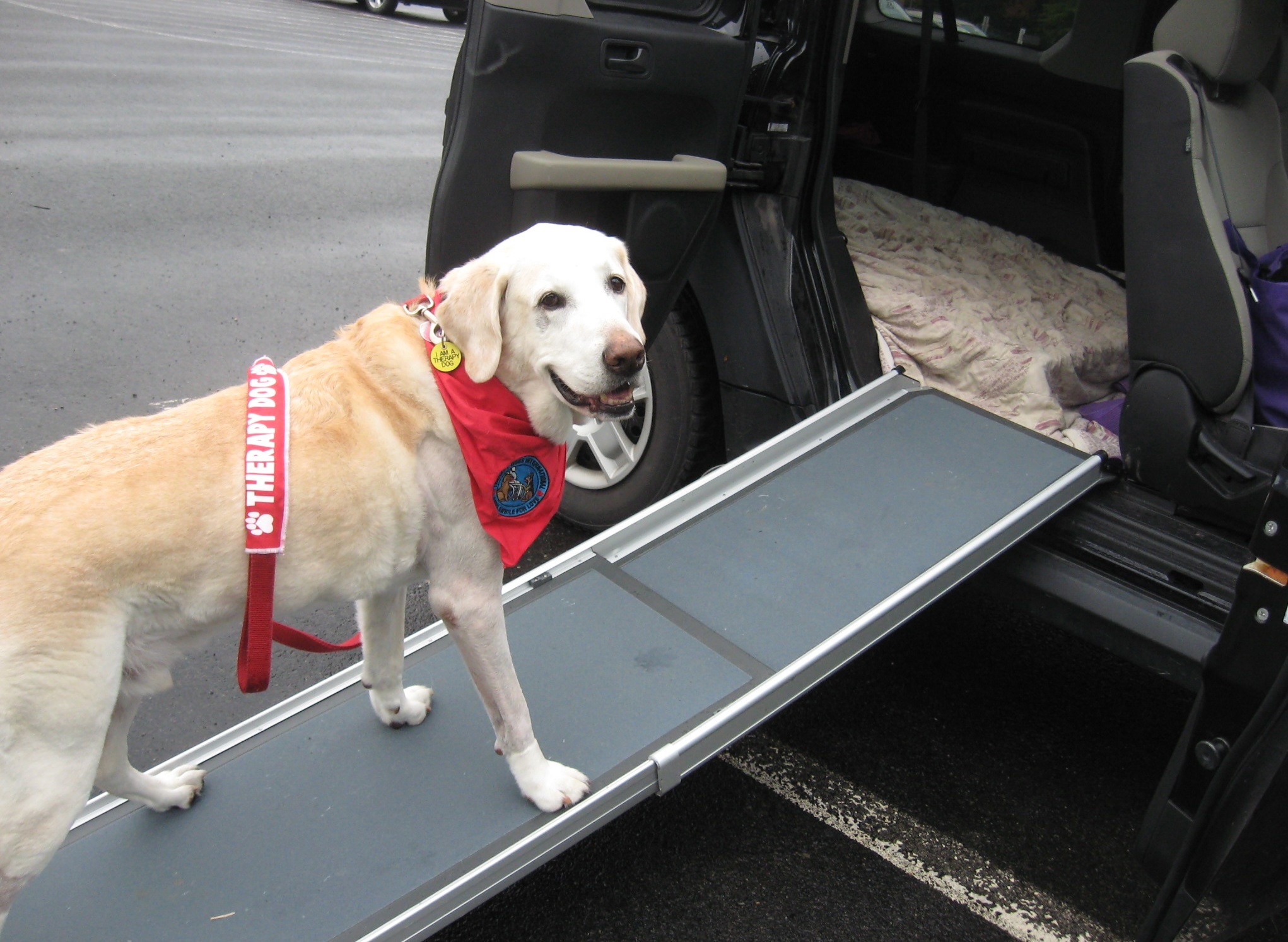
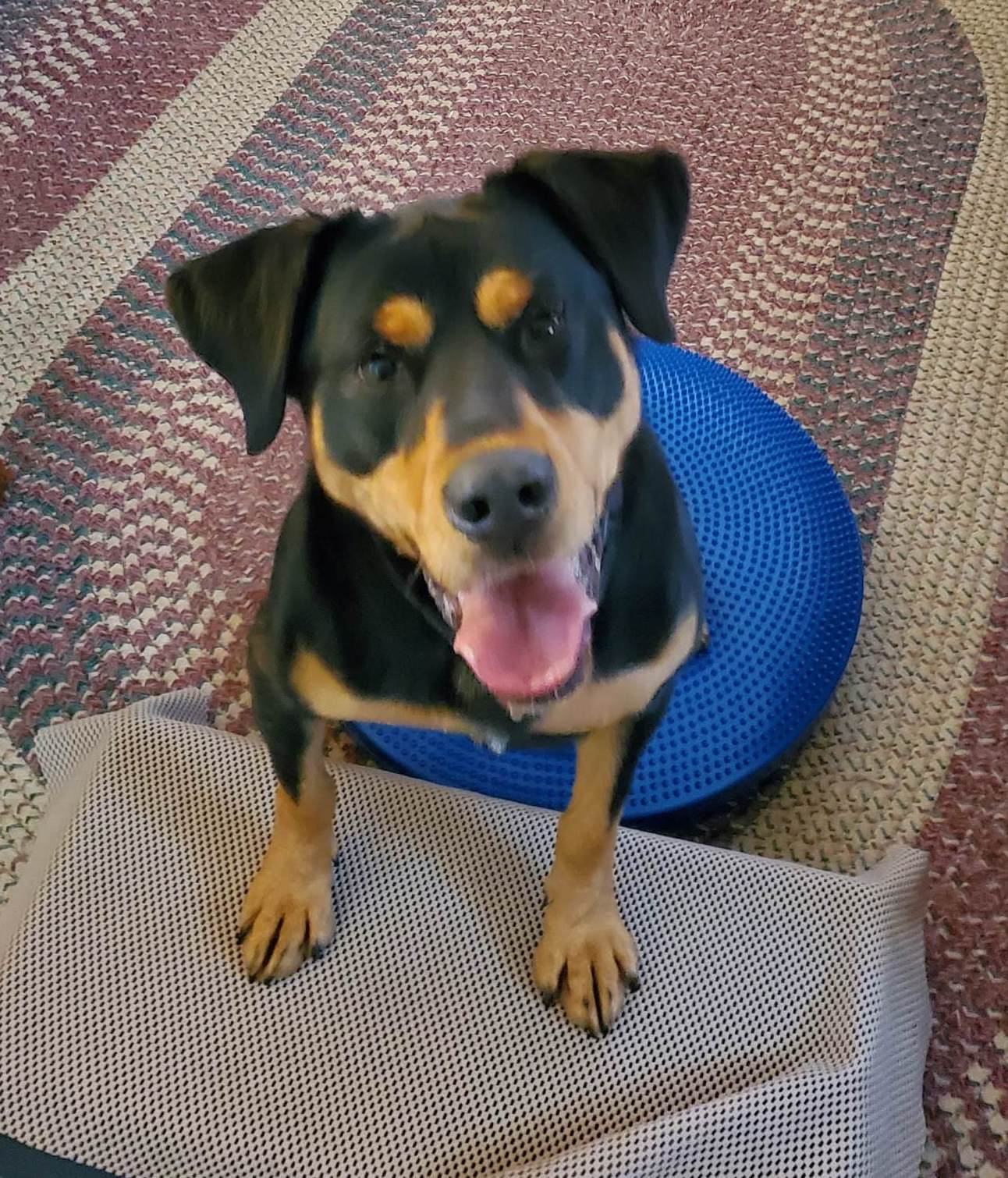
Can rehabilitation therapy help a dog with CCD?
Absolutely!! Though it’s not often thought of by owners, vets or the rehab professionals themselves! Research in human models has shown a potential protective benefit of physical activity against Alzheimer’s and dementia. Physiotherapy is also often recommended for human patients with cognitive impairments that may have begun to also affect their physical abilities either directly or secondarily through withdrawal from activities. Often these programs focus on strength and balance. They can come in many forms such as water therapy, dance or group fitness classes.
If we are using physiotherapy or rehabilitation often in the care of people than why not for our dogs as well?!
What do I wish more owners would do when caring for a dog with CCD?
I wish more owners gave themselves a little bit of grace. It is not an easy job to care for a dog with high or increasing needs. It can feel like you are failing or just not doing good enough. Take a step back. If it was a close friend in your shoes doing everything you are doing to care for their dog, what would you tell them? Likely that they were doing their best! I also wish owners would give themselves a break or time out when they need it. Can a neighbour watch your dog for a bit? Can you pay someone to step in for a few hours? Not sure where to look for someone? Rover.com is a great place to find someone who has cared for a dog just like yours before.
References:
Prpar Mihevc, Sonja, and Gregor Majdič. “Canine Cognitive Dysfunction and Alzheimer’s Disease – Two Facets of the Same Disease?.” Frontiers in neuroscience vol. 13 604. 12 Jun. 2019, doi:10.3389/fnins.2019.00604
Chapagain, Durga et al. “Cognitive Aging in Dogs.” Gerontology vol. 64,2 (2018): 165-171. doi:10.1159/000481621
Bray, Emily E et al. “Associations between physical activity and cognitive dysfunction in older companion dogs: results from the Dog Aging Project.” GeroScience vol. 45,2 (2023): 645-661. doi:10.1007/s11357-022-00655-8
Slobodian, Shauna. This Old Dog: The Owner’s Guide to Providing the Best Care for Their Senior Dog. Shauna Slobodian, 2021.

